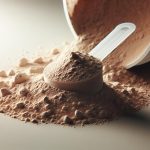Imagine you’re working in your garage or kitchen, and things start heating up. Grease, that ever-present lubricant and cooking aid, can make or break your task. But have you ever wondered at what temperature grease melts? Understanding this is crucial whether you’re maintaining machinery or perfecting a recipe.
Generally, grease melts at temperatures ranging from 250°F to 430°F (121°C to 221°C), depending on its composition and additives.
Key Takeaways:
- Grease Melting Point: Typically between 250°F to 430°F (121°C to 221°C).
- Composition Matters: Different additives and thickeners can significantly alter the melting temperature.
- High-Temperature Greases: Some specialized greases can withstand temperatures up to 570°F (298°C).
- Practical Implications: Knowing the melting point helps in selecting the right grease for your needs, ensuring efficiency and safety.
Understanding the melting point of grease is not just a technical detail; it’s about making informed choices that can affect performance and safety in both mechanical and culinary applications. So next time you’re working with grease, you’ll know just how hot things can get before it starts to melt.
Contents
What Temperature Does Grease Melt?
Grease typically melts within a temperature range that varies greatly depending on its composition and additives. Generally, standard greases start to melt between 177°C (350°F) and 204°C (400°F). However, specialty greases are formulated to withstand higher or lower temperatures.
| Type of Grease | Typical Melting Point Range | Characteristics |
| Standard Grease | 177°C to 204°C (350°F to 400°F) | Commonly used in automotive and industrial applications |
| Fluorinated Hydrocarbon-Based Grease | Up to 570°F (299°C) | Extremely high temperature tolerance but very expensive |
| Clay-Thickened Grease | 500°C or higher (932°F or higher) | Non-melting properties, suitable for extreme conditions |
| Metal Soap Thickeners (e.g., Lithium, Calcium) | 250°F to 430°F (121°C to 221°C) | Requires additives to prevent oxidation and thermal degradation |
High-Temperature
Grease typically reaches its melting point at temperatures between 177°C to 204°C (350°F to 400°F). This range varies based on the specific type of grease and its additives.
Grease is formulated from a base oil and thickening agent, with various additives to enhance performance under specific conditions. The melting point, often referred to as the “dropping point,” is crucial for understanding its thermal limits.
| Type of Grease | Melting Point Range | Usage |
| Standard Greases | 177°C to 204°C (350°F to 400°F) | General automotive, industrial applications |
| Fluorinated Hydrocarbon-Based Greases | Up to 260°C (500°F) and beyond | High-temperature environments, aerospace |
| Clay-Thickened Greases | Above 260°C (500°F) | Extreme conditions, such as steel mills |
Selection Strategies
To determine the melting point of grease effectively, several strategies can be employed. These methods ensure accurate results while accommodating various grease compositions and properties.
Initial Estimation with Gradual Heating
- Heat the Sample Slowly: When the melting point is unknown, gradually heat the grease at a moderate rate. This approach provides an initial estimate without risking the integrity of the sample.
| Step | Description | Purpose |
| Initial Heating | Heat the sample steadily. | Determine approximate melting point. |
Cooling and Reheating for Accuracy
- Cool Below Previous Melting Point: After the initial estimate, allow the sample to cool to at least 20°C below the determined melting point before re-evaluation. This ensures the sample’s stability and prepares it for more precise measurement.
| Step | Description | Purpose |
| Cooling | Let the sample cool to 20°C below the initial melting point. | Prepare for precise measurement. |
| Reheating | Conduct subsequent trials with fresh samples. | Obtain accurate melting point. |
Employing Standard Techniques
- Follow Established Methods: Use standardized techniques, such as those outlined in ASTM D2265 and ISO 2176, which provide guidelines for accurate and consistent melting point determinations.
| Step | Description | Purpose |
| Standard Techniques | Utilize ASTM D2265 or ISO 2176 guidelines. | Ensure accuracy and consistency. |
Using Differential Scanning Calorimetry (DSC)
- DSC Analysis: Differential Scanning Calorimetry is a precise method that measures the heat flow associated with phase transitions in grease. It provides detailed information about melting behavior and temperature.
| Step | Description | Purpose |
| DSC Preparation | Prepare the grease sample for DSC analysis. | Measure heat flow and phase transitions. |
| DSC Measurement | Conduct the DSC analysis. | Obtain precise melting point data. |
Consistent Sample Preparation
- Uniform Sample Preparation: Ensure samples are prepared consistently to avoid discrepancies in results. This includes controlling sample size, shape, and handling procedures.
| Step | Description | Purpose |
| Sample Size | Control the size and shape of the grease sample. | Ensure uniformity in measurements. |
| Handling Procedures | Follow consistent handling procedures. | Maintain sample integrity. |
Properties of High-Temperature Grease
The following key properties enable it to withstand high temperatures:
- Thermal Stability: The ability to maintain its structure and lubricating properties at elevated temperatures. This is achieved through the selection of thermally stable base oils and additives.
- Oxidation Resistance: High-temperature greases are formulated to resist oxidation, which prevents the formation of harmful deposits and sludge that can degrade the grease and impair its performance.
- High Dropping Point: The dropping point is the temperature at which the grease becomes fluid enough to drip. High-temperature greases have a high dropping point, typically above 200°C, ensuring they remain effective in severe heat.
- Viscosity Stability: The grease retains its viscosity despite temperature fluctuations, ensuring consistent lubrication under varying thermal conditions.
- Additives: These greases contain antioxidants, anti-wear agents, and extreme pressure additives to enhance performance and longevity under high thermal and mechanical stress.
- Chemical Stability: Resistance to chemical breakdown and interaction with other substances in the operating environment, ensuring prolonged effectiveness and protection of machinery components.
- Mechanical Stability: The ability to withstand mechanical stresses without losing consistency or breaking down, critical for maintaining a lubricating film between moving parts.
High-Temperature Grease Compatibility
When determining the compatibility of high-temperature grease for specific applications, several critical factors must be assessed to ensure optimal performance and longevity:
Working Temperature Conditions
- Ensure the grease can withstand the operational temperature range of the application. High-temperature greases are designed to operate at elevated temperatures without losing their lubricating properties.
Thickener and Additive Chemistry
- Grease thickeners and additives significantly influence performance characteristics. The thickener type (e.g., lithium complex, polyurea) affects the grease’s stability and resistance to heat and oxidation.
Grease Degradation
- Over time, thermal stress and oxidative failure can cause grease to degrade, reducing its effectiveness. Evaluating the grease’s ability to resist degradation under high temperatures is crucial.
Relubrication Needs
- Consider the relubrication intervals required for maintaining optimal lubrication. Some greases may need frequent application, while others are formulated for extended intervals.
Grease Composition
- The base oil and additive package dictate properties like viscosity, operating temperature range, and stability. Selecting grease with the appropriate composition is vital for performance.
Compatibility Testing
- Conduct thorough compatibility tests by mixing greases in various ratios and evaluating their performance. Key parameters to observe include wear resistance, penetration stability, and changes in consistency.
Thermal and Oxidative Stability
- Ensure the grease maintains its lubricating properties under high thermal and oxidative stress. Grease that resists oxidation and thermal breakdown will provide longer-lasting protection.

Additive Performance
- Assess the effectiveness of additives under high-temperature conditions. Additives can enhance properties like wear resistance, corrosion inhibition, and load-carrying capacity.
How to Select a High-Temperature Grease
When selecting a high-temperature grease, several crucial factors need to be considered to ensure optimal performance and longevity of machinery components.
| Factor | Description | Example |
| Working Temperature Conditions | Assess the operational temperature range of equipment. | Fluorinated hydrocarbon greases withstand up to 570ºF. |
| Grease Composition | Understand the base fluids, thickeners, and additives. | Metal soap thickeners are stable up to 430ºF. |
| Lubrication Needs and Wear Resistance | Ensure the grease provides excellent lubrication and reduces wear. | High-temperature greases enhance component lifespan. |
| Compatibility | Check compatibility to prevent chemical reactions and failure. | Regular relubrication avoids oxidative failures. |
| Cost and Efficiency | Balance cost with performance benefits. | Expensive greases offer superior high-temperature stability. |
Conclusion
Understanding the temperature at which grease melts is essential for both practical and safety reasons, whether you’re tinkering in the garage or perfecting a recipe in the kitchen. The melting point of grease, ranging from 250°F to 430°F (121°C to 221°C), is heavily influenced by its composition and any additives present. This range can extend even higher for specialized greases designed for extreme conditions, with some able to withstand up to 570°F (298°C).
Different types of grease have specific melting points based on their formulation. For instance, standard greases typically melt between 177°C to 204°C (350°F to 400°F), making them suitable for everyday automotive and industrial applications. On the other hand, high-temperature greases, such as those based on fluorinated hydrocarbons or clay thickeners, maintain their stability and performance in more demanding environments, albeit at a higher cost.
Selecting the appropriate grease involves considering the operational temperature range of your machinery or cooking application. Using a grease with an inadequate melting point can lead to equipment failure or safety hazards. Therefore, understanding and choosing the right grease can enhance performance, ensure safety, and extend the lifespan of your equipment or culinary endeavors.




